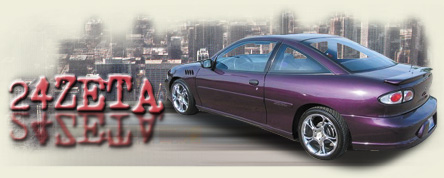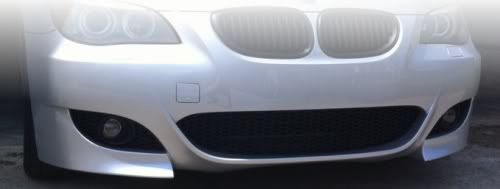

Quote:
A Planet LSX forum member's posted a report with photos of the new Chevy Camaro with a crack on the front fascia's big upper brow reportedly attributed to a high-speed run. UPDATE BELOW. The cracks, which appear on both sides of the big upper brow of the nose of the new Camaro, were attributed to a high speed run — 155 MPH — earlier in the week. Here's the full report:
While I was doing the photo shoot on a 2010 Camaro SS this past Friday, we noticed some cracks forming at the upper corners of the grille. The tech that was assisting us during the shoot said that those happened during a top speed run earlier that week. The car achieved 155 mph, and apparently it lifted the upper part of the nose enough to form the cracks. I'm not sure if this problem has been addressed, or even mentioned before. Surely it can be something that GM can fix by adding more bracing perhaps, or a thicker nose molding. This 2010 SS was a production car, only a week old, so this concerns me. It might not be a good idea to do any high-speed runs in your new Camaro, at least until we understand the problem and how to fix it first.
Nevermind the high speed runs, maybe it'd also be a good idea to make sure you don't encounter any stiff winds. Match this nose-cone issue up with the slapped-on brake weights issue and Camaro crap-out we reported last week and you've got yourself a couple of cracks in the otherwise perfect fan-boy fascia of the Camaro. No pun intended.
UPDATE: We've now heard back from Planet LSX's source at GM: "Apparently this was an early production nose, slapped on to get it to Hennessey for parts development. The issue has been addressed and repaired on other cars. Something about a bolted bracket not being installed properly." Glad to hear that! [Planet LSX via Camaro5]

Quote:
Forumites at Camaro5 have been collectively scratching their heads for a couple days, wondering why there appear to be two layers of lead wheel weights stuck onto their brake calipers. It's a mystery Charlie Brown! The confusion started when a poster uploaded an image of his new Camaro's Brembo calipers, on which were riding two rows of lead weights, normally affixed to the inside of a wheel rim to balance the tire. This led everyone with a Camaro to run outside to see it their mullet machine's also had the weights, which they do, at least on among the folks on the forum. GM has not answered to the confusion yet, but the leading theory is they were place on the caliper as a quick and dirty fix to alleviate brake squeal. From a physics perspective, this explanation is plausible, as resonant frequency is in large part determined by mass, and by changing the vibrating mass of the caliper with the weights, a troublesome squeal would be eliminated for a particular driving condition.
The trouble is if they're using normal brake weights, the heat cycling of the caliper will eventually cause the adhesive to fail and, if things get too serious on the track, the lead could actually melt. Though it's an odd issue and not really a big deal, we'll be keeping you in on the loop during Camaro brake-gate, though we recommend Camaro owners visit their local dealer and have their muffler bearings, blinker fluid, and piston-return springs checked out, just in case. Click here for the high-resolution image.







Quote:
UPDATE: We've now heard back from Planet LSX's source at GM: "Apparently this was an early production nose, slapped on to get it to Hennessey for parts development. The issue has been addressed and repaired on other cars. Something about a bolted bracket not being installed properly." Glad to hear that! [Planet LSX via Camaro5]
